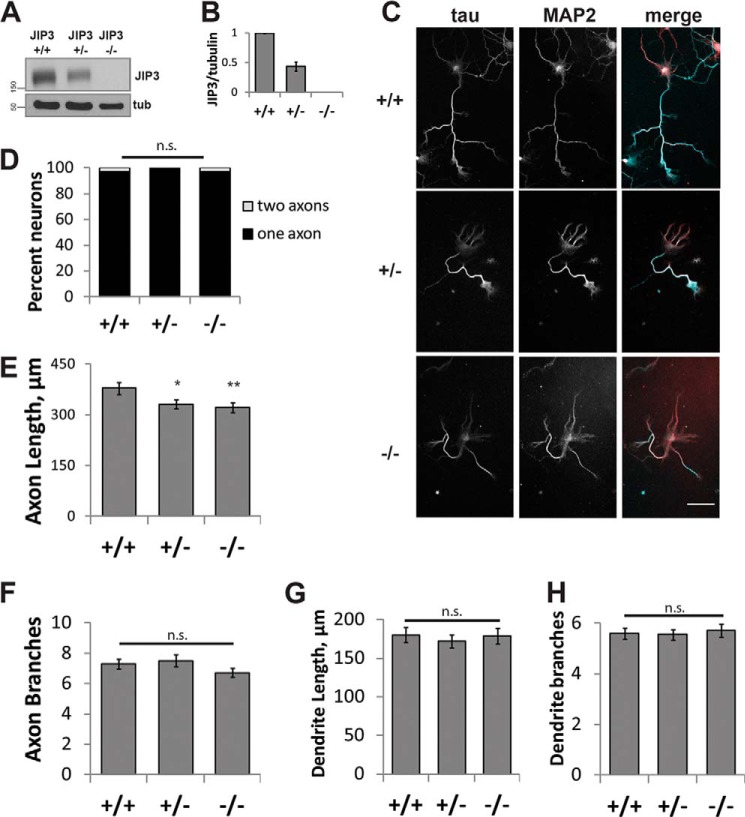FIGURE 3.
JIP3 is required for axon elongation. A, representative Western blots from JIP3 WT (+/+), heterozygous (+/−), and KO (−/−) littermate embryonic whole brain lysates. B, quantification of A. JIP3 heterozygosity results in an ∼50% reduction of JIP3 expression compared with WT. n = 5 pups in each group, litter-matched. C, Tau (axons) and MAP2 (dendrites) staining of littermate WT, heterozygous, and KO embryonic hippocampal neurons at DIV5. Most neurons produce one Tau-positive axon and multiple MAP2-enriched dendrites. Scale bar, 50 μm. D, quantification of axon number from C. Axons were defined as Tau-positive neurites. No difference in axon number was detected between any of the groups (Kruskal-Wallis, p = 0.22). D–H, n = 100 neurons/group over two replicates. E, quantification of total axon length from C. Heterozygous and KO axons are significantly shorter than WT (ANOVA, p = 0.018; *, p < 0.05; **, p < 0.01 compared with WT; Tukey's HSD). F, quantification of axon branching from C by Sholl analysis. No differences in axon branching were detected in any of the groups (ANOVA, p = 0.23). G, total dendrite length quantification of C. No differences in dendrite length were detected in any group (ANOVA, p = 0.81). H, dendrite branching quantification of C by Sholl analysis. No difference in dendrite branching was detected in any group (ANOVA, p = 0.87). n.s., not significant; Error bars, S.E.

